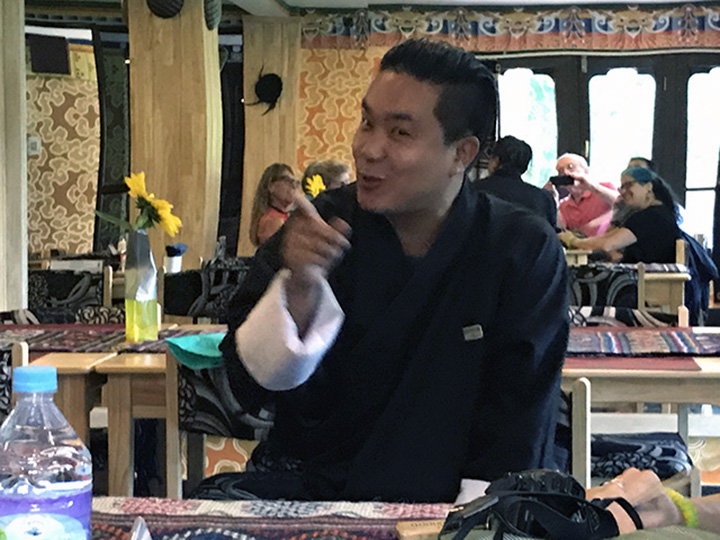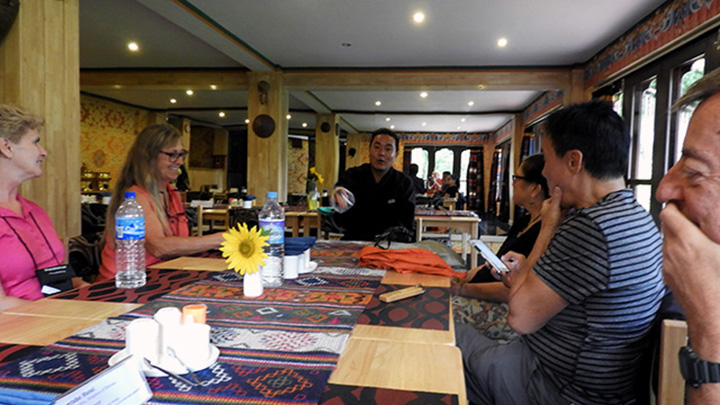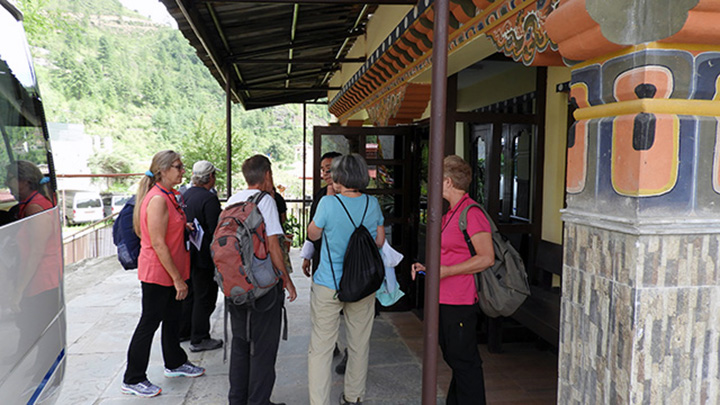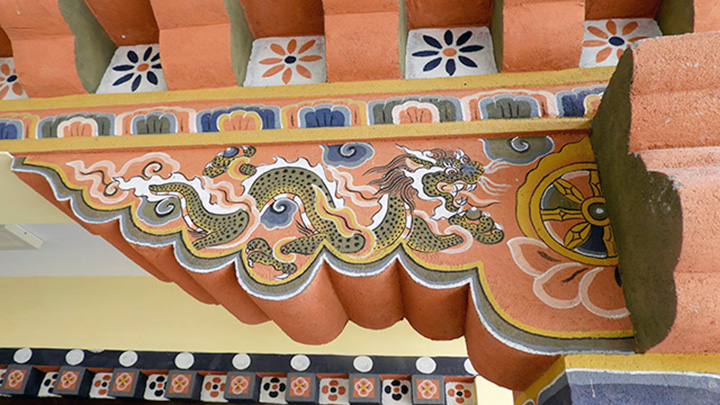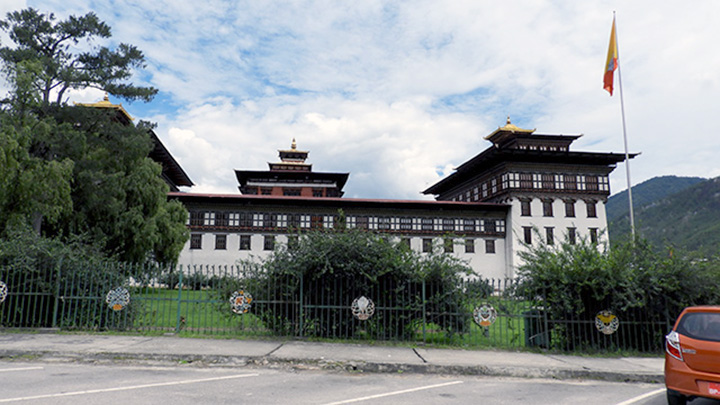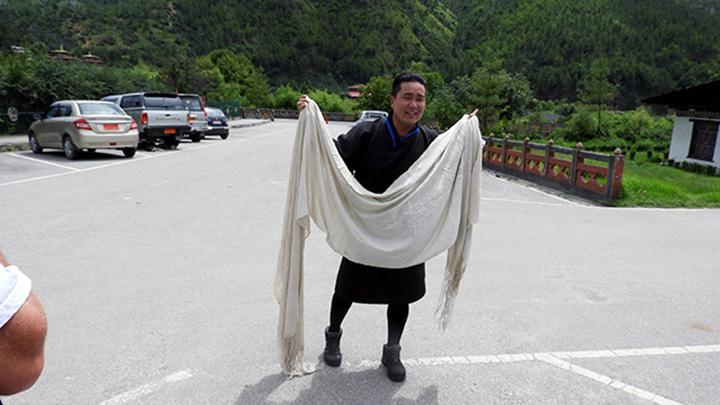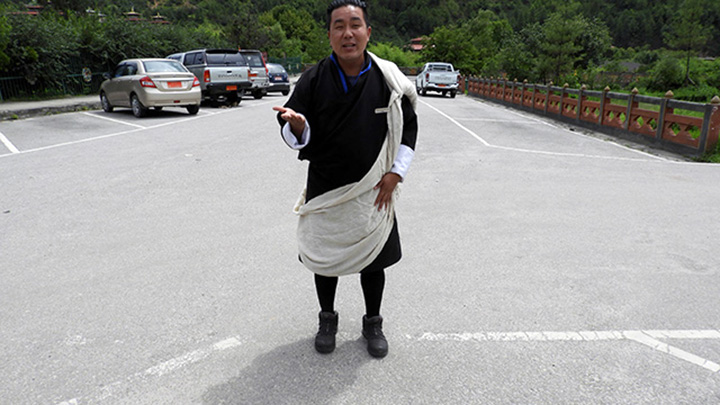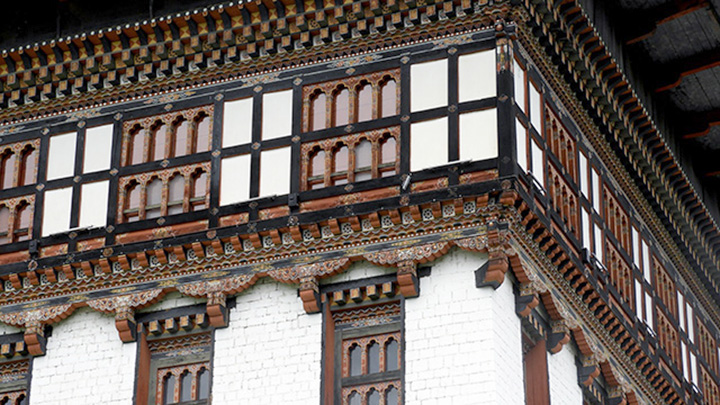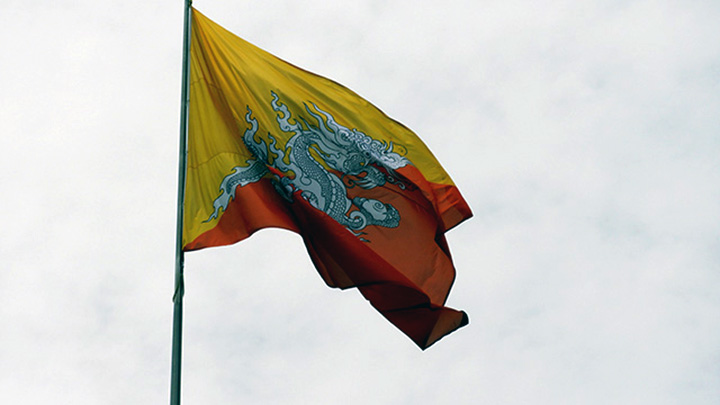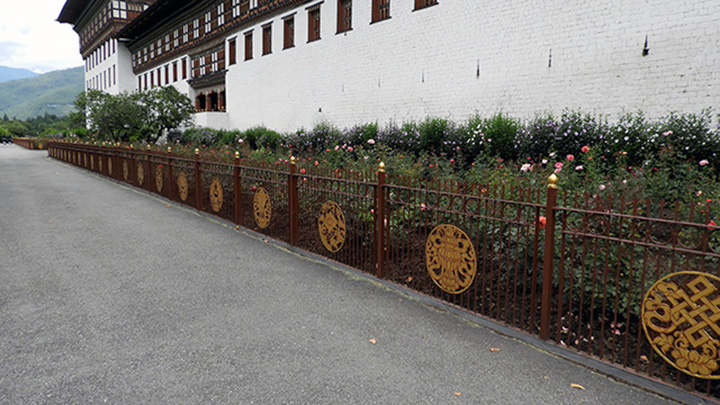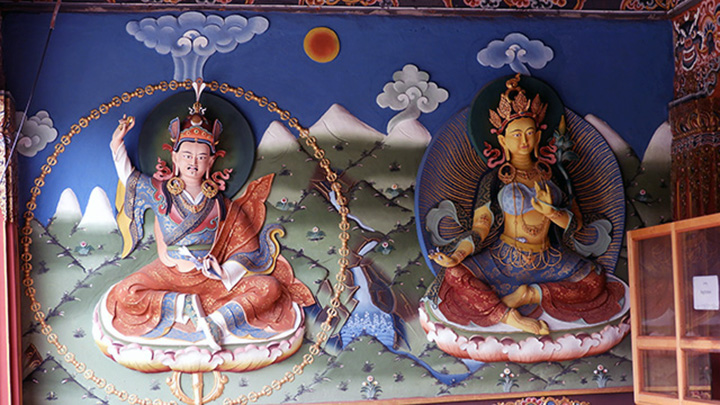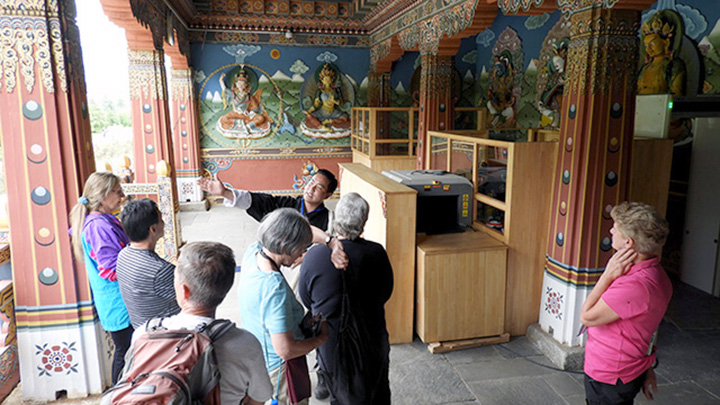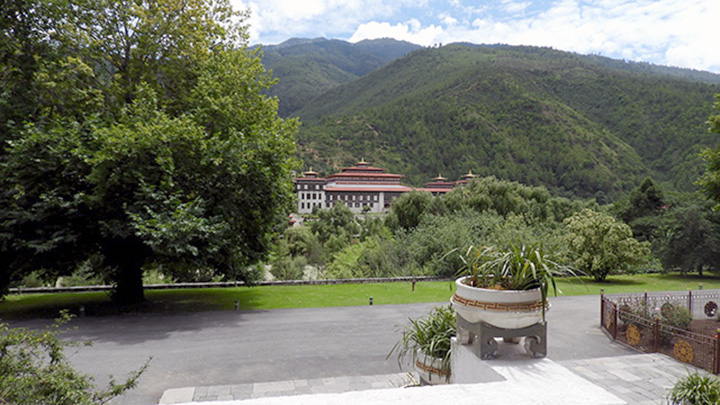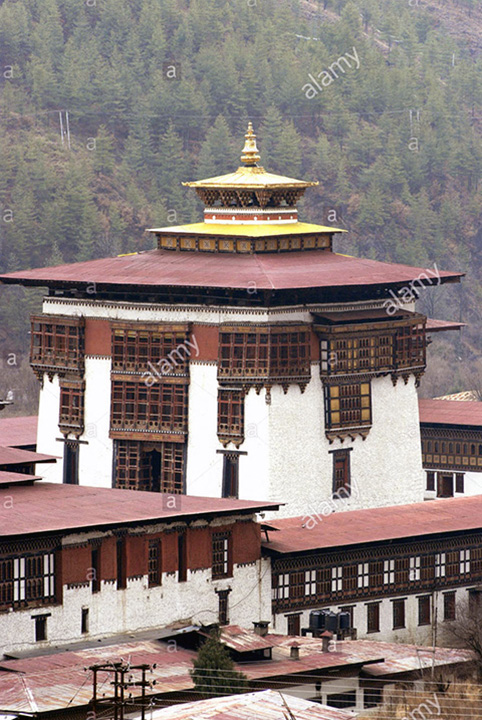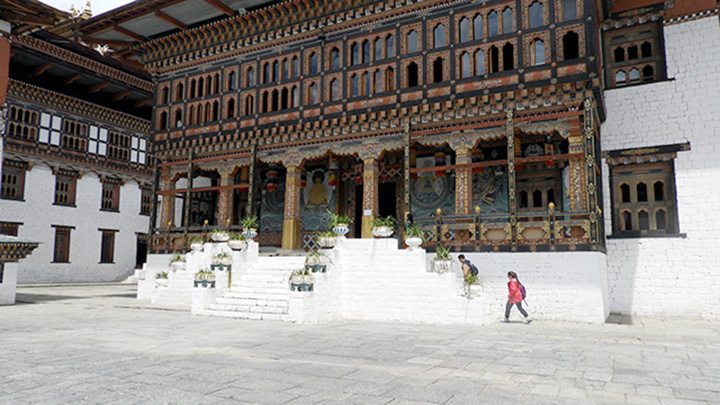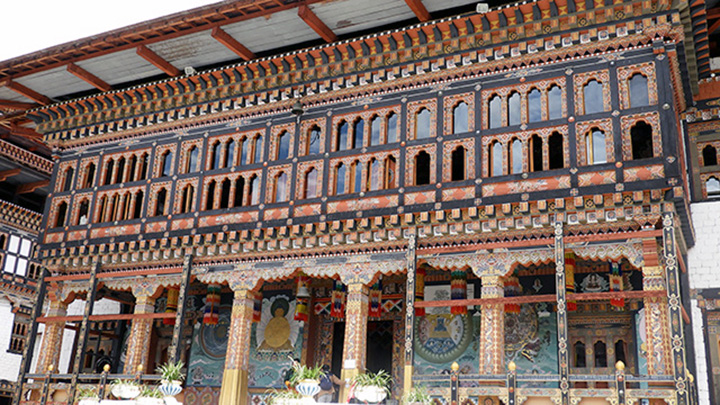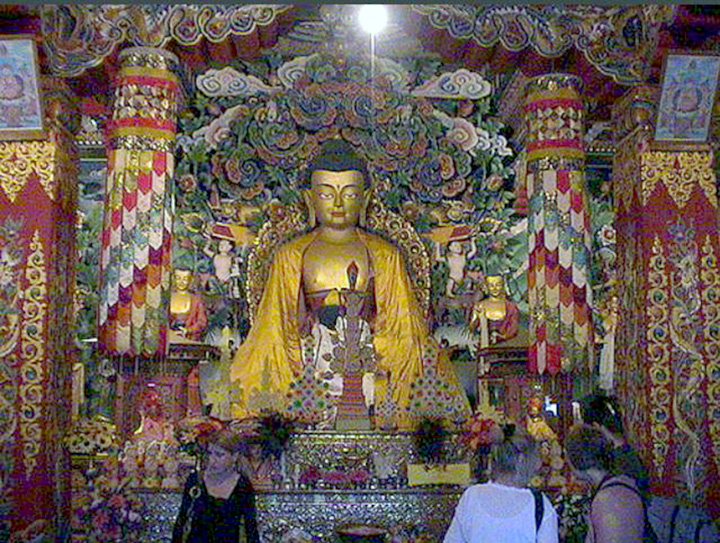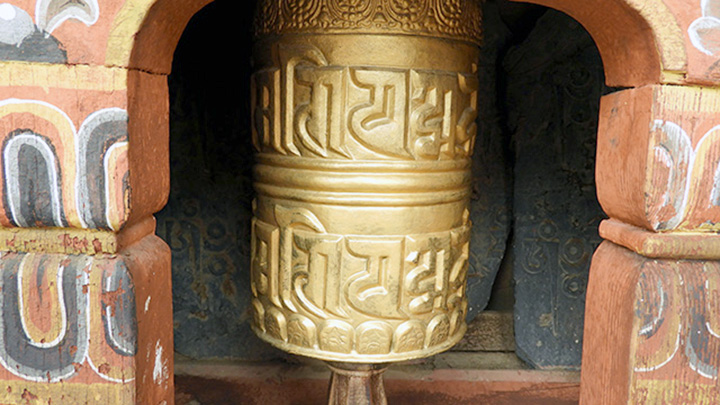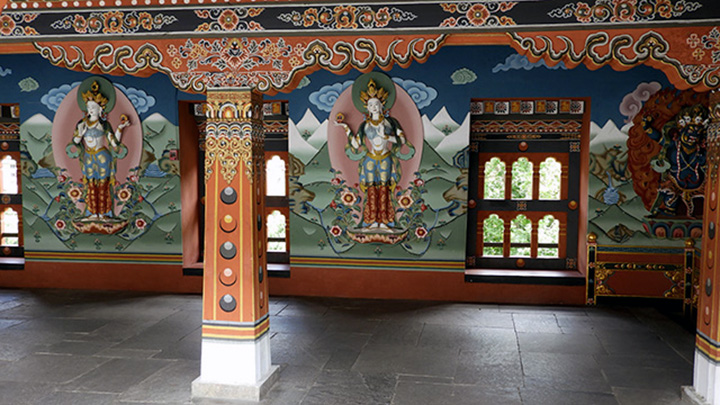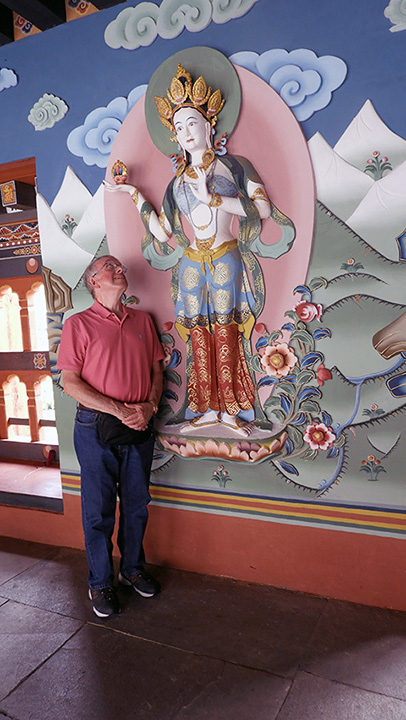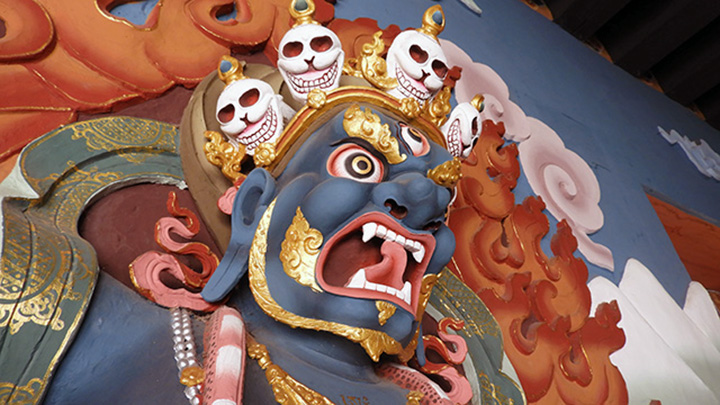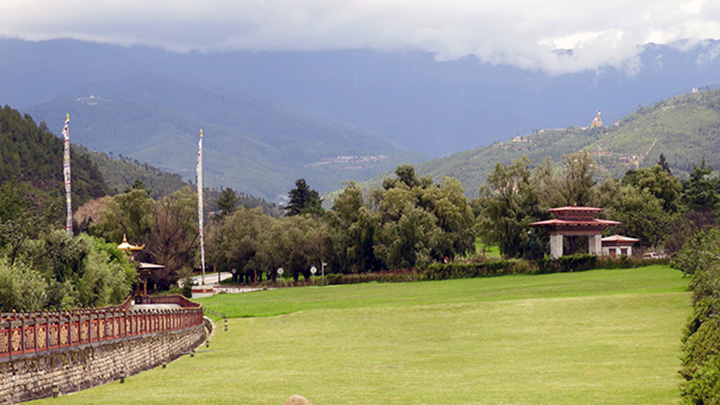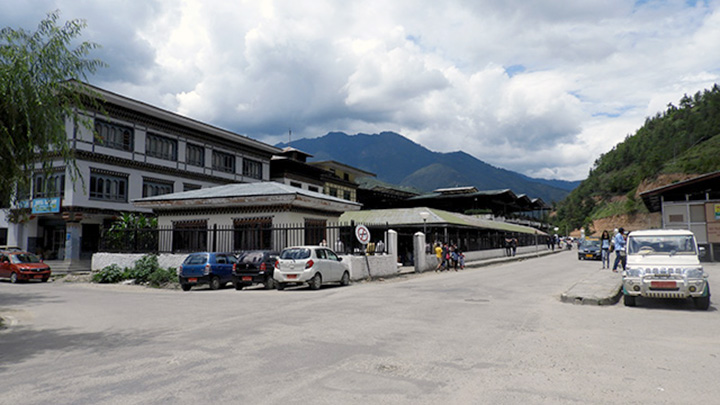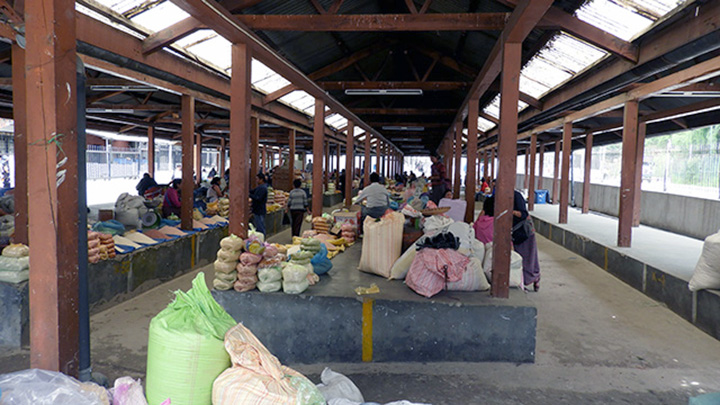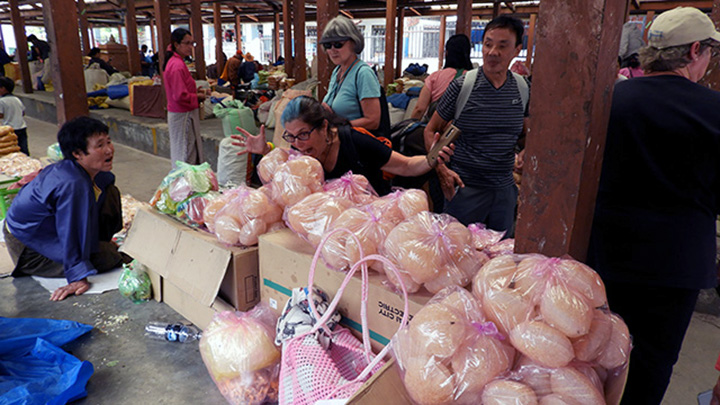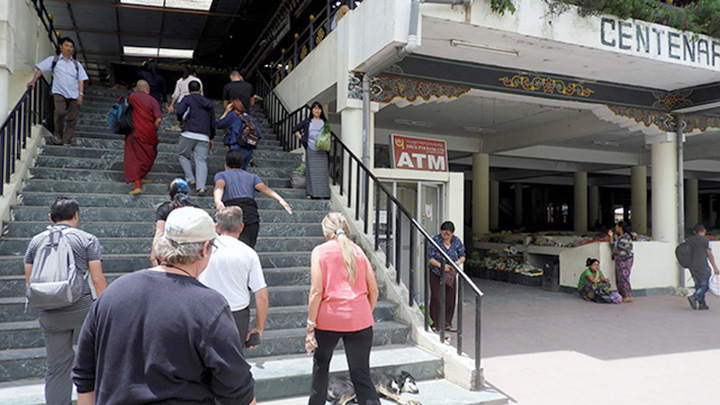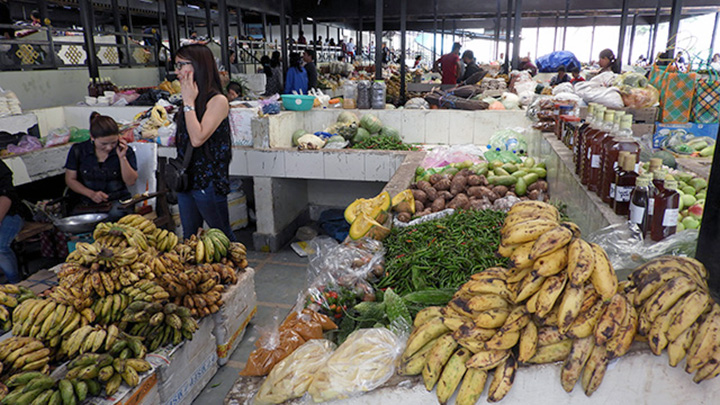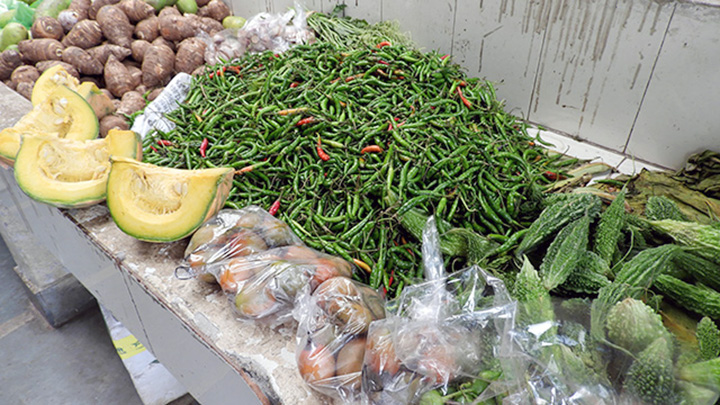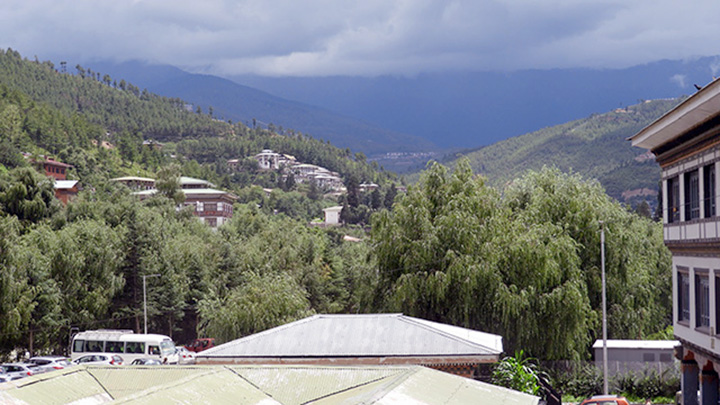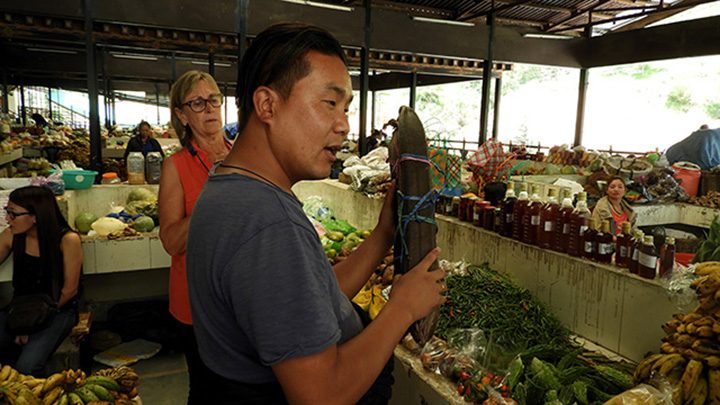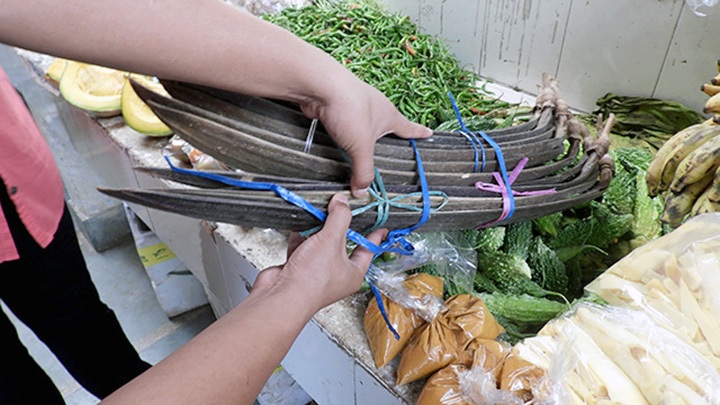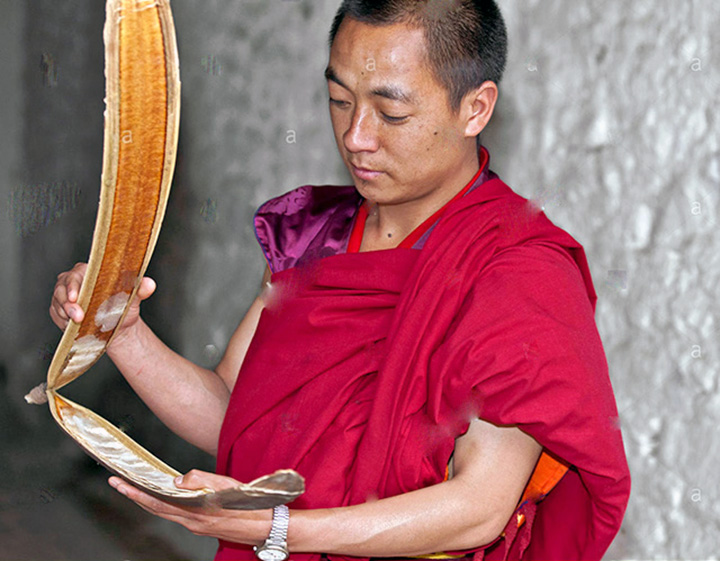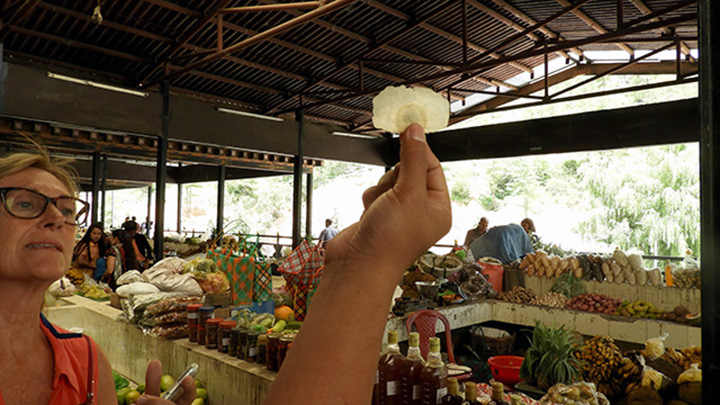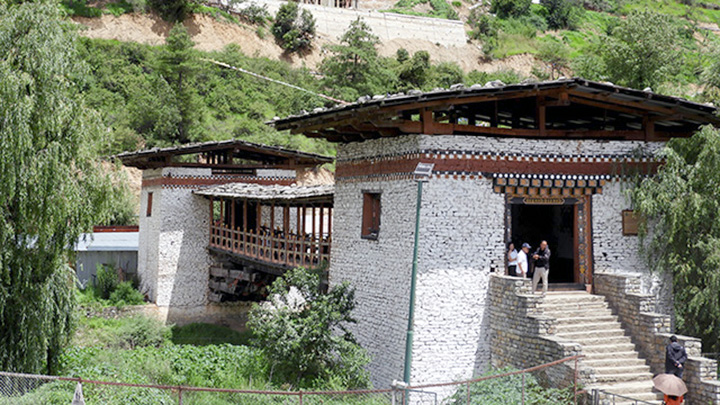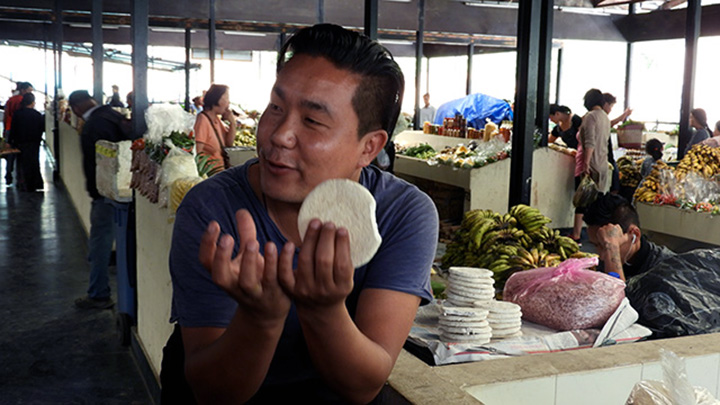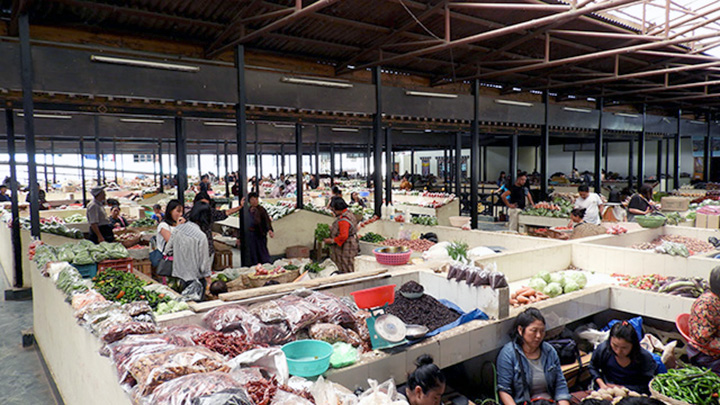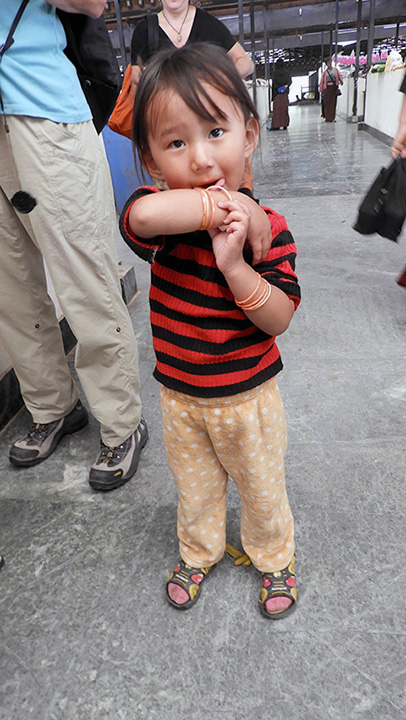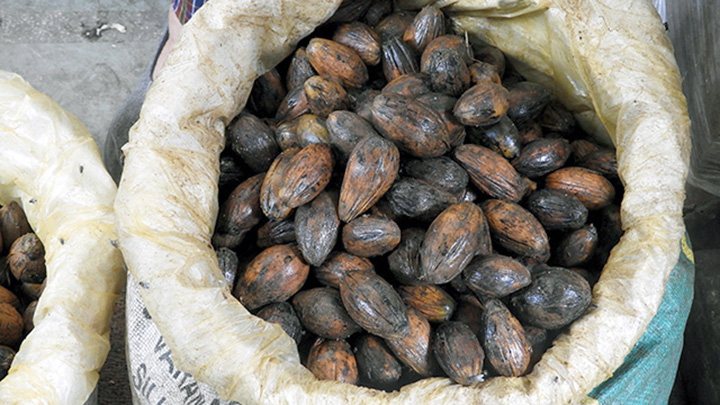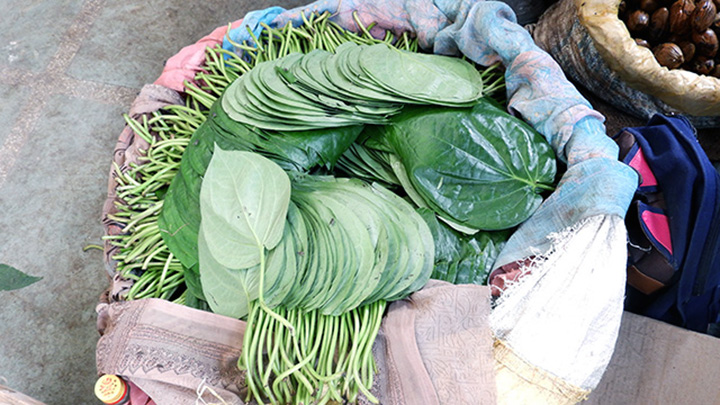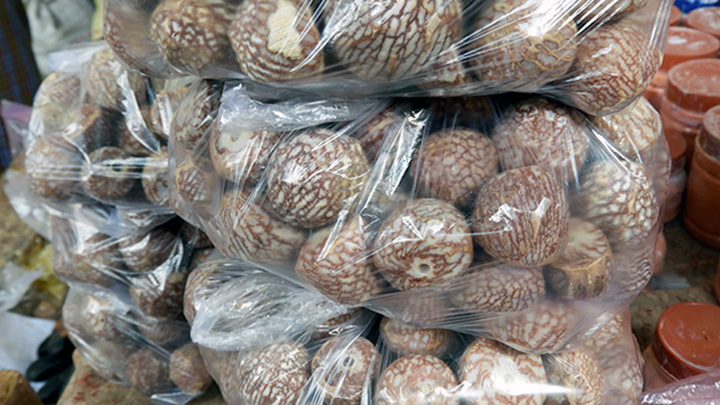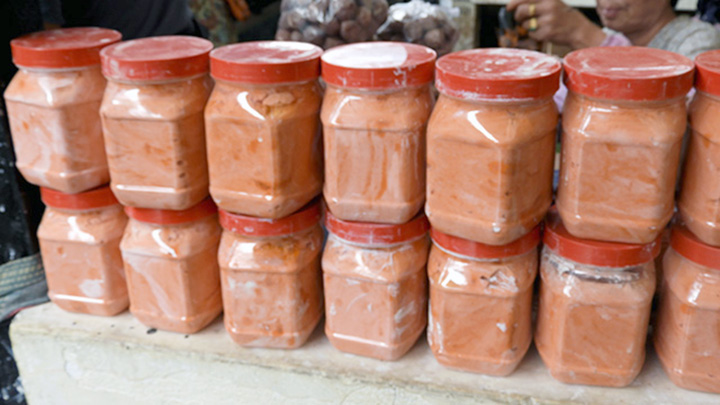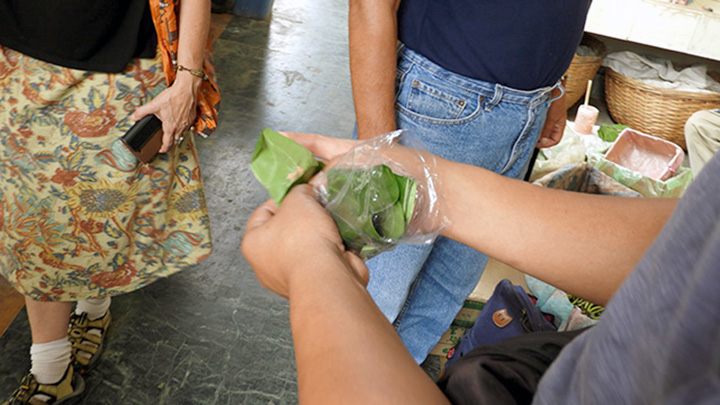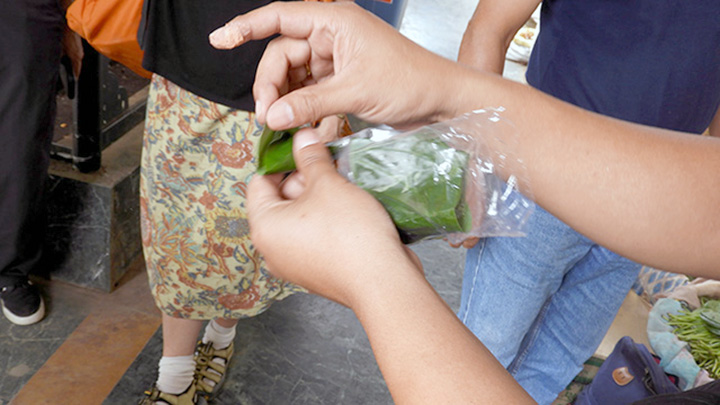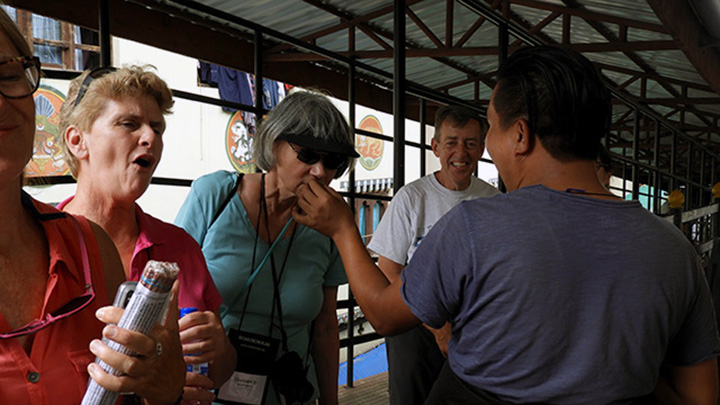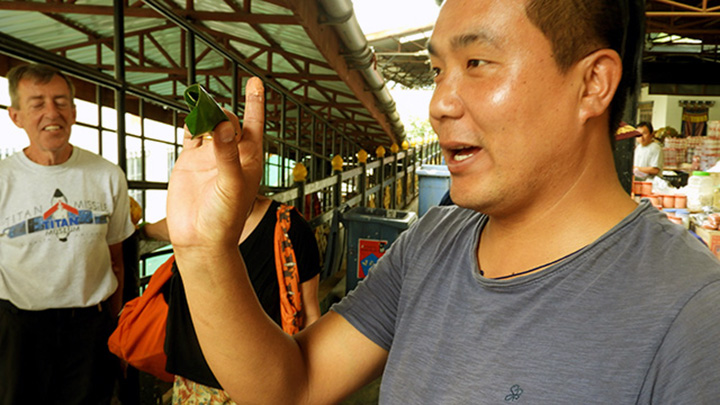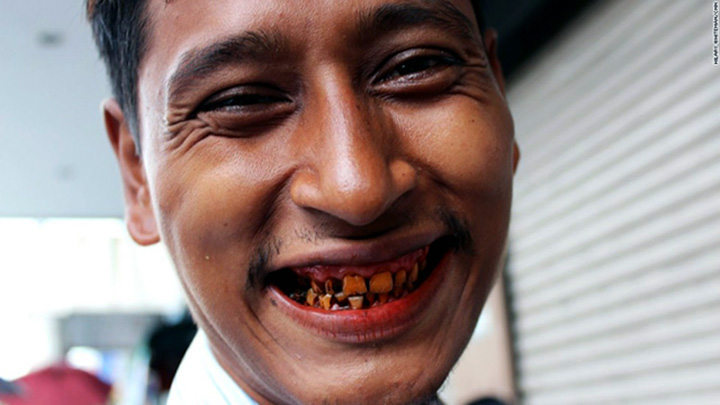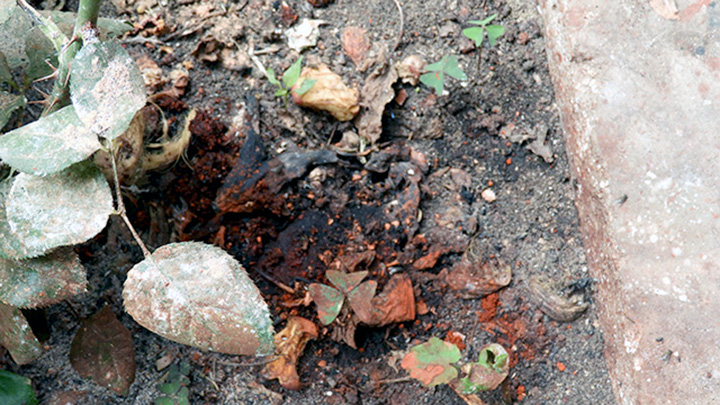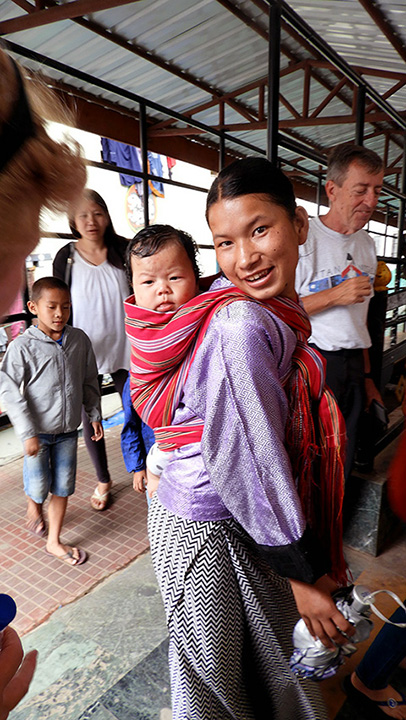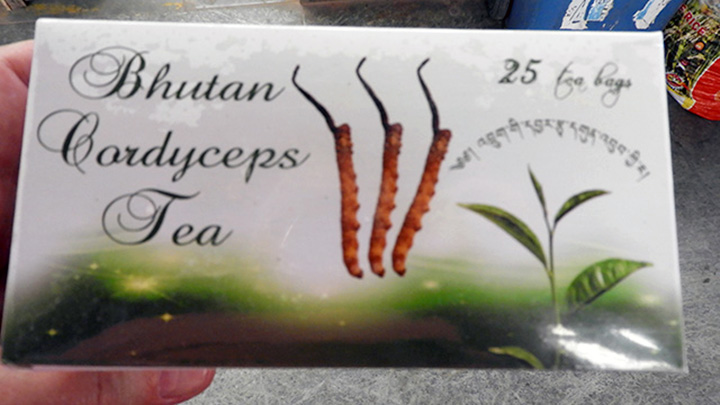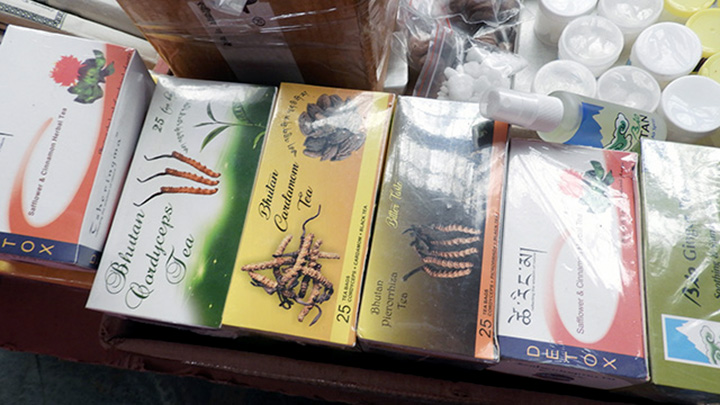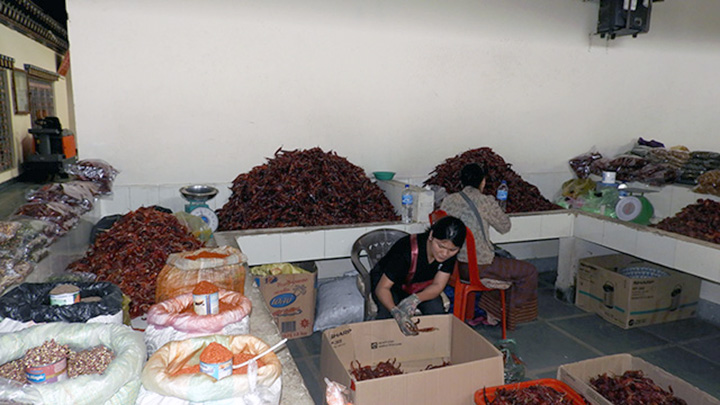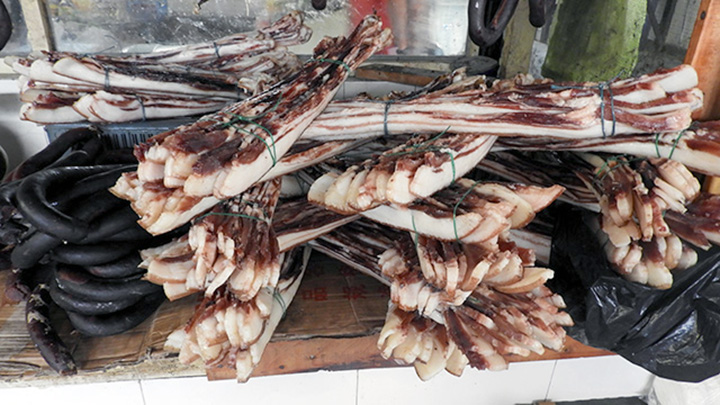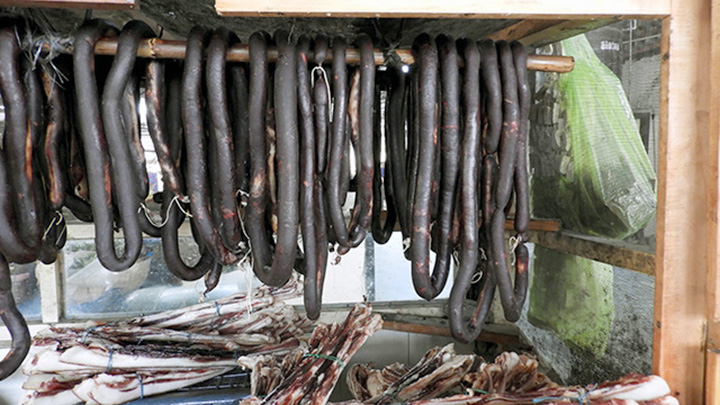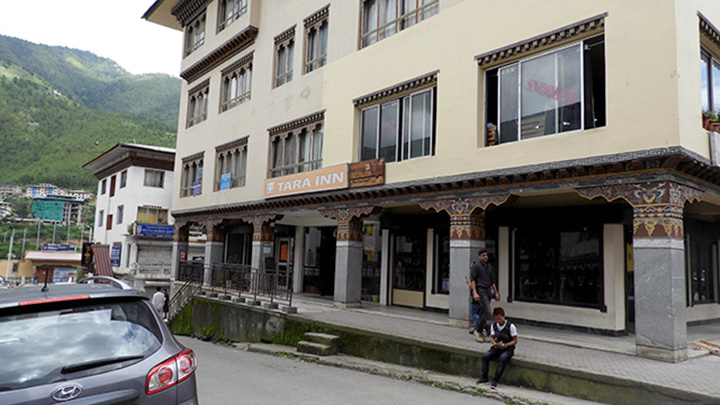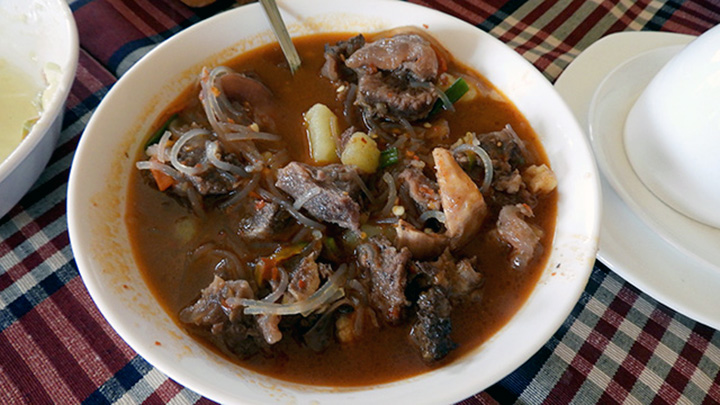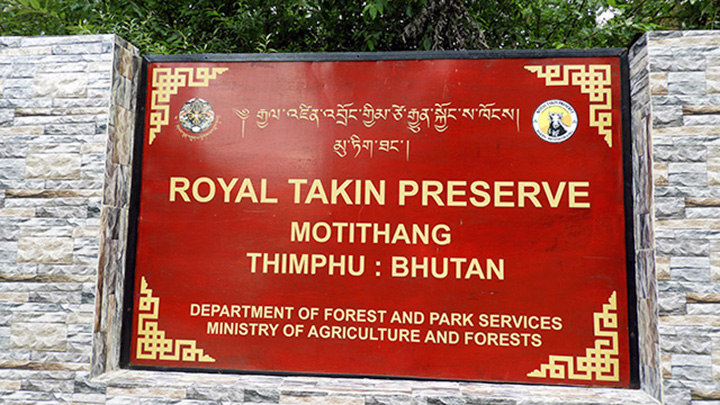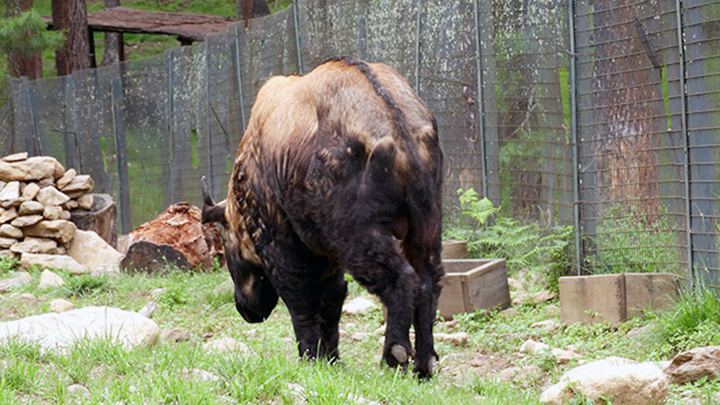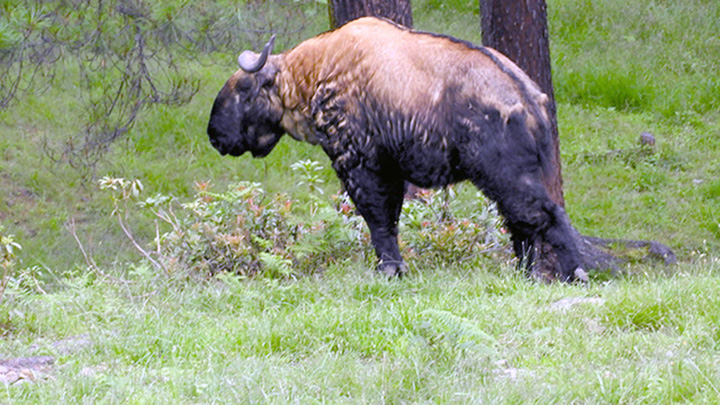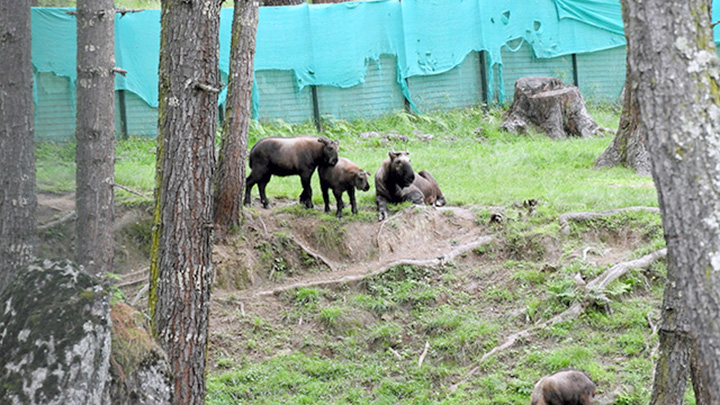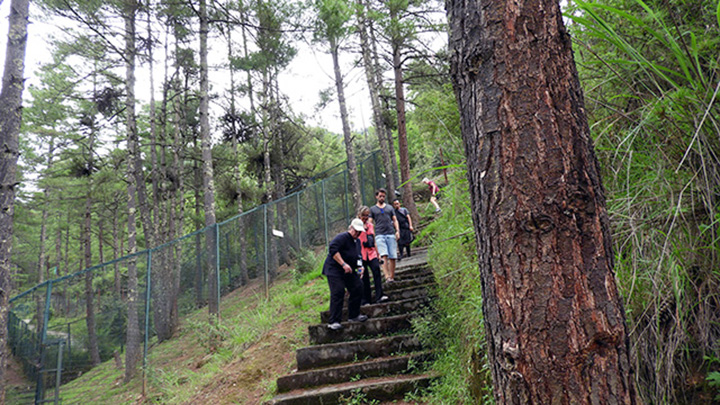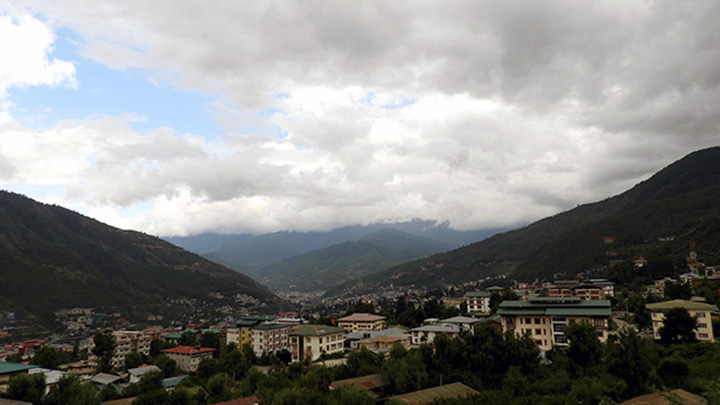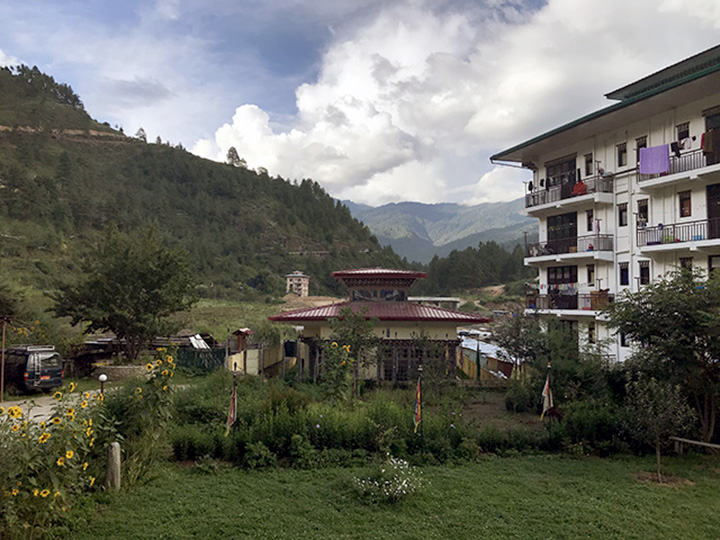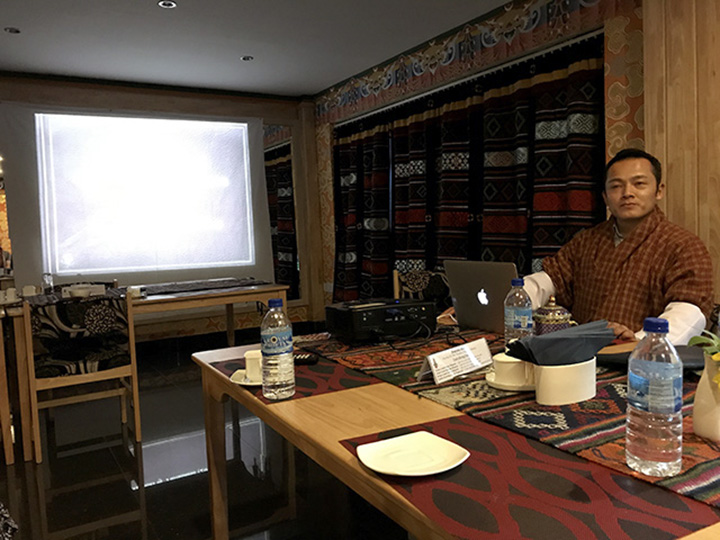|
Thimphu (tim-POO) is the capital and largest city of the Kingdom of Bhutan. According to the census of 31 May 2005, the population of the city was 79,185.
Here's the view from the window of my room this morning. Many of those buildings across the way are under construction. Bhutan is indeed having a building boom.
Tim is turning out to be just a terrific tour guide.
This morning he gave us an official Road Scholar tour orientation which you might think was a little late, considering all we did yesterday, but it didn’t matter. We got some very good, very helpful information in the session.
We're getting ready for our first full day of sightseeing.
The detailed artwork on the walls of our hotel was representative of the decorations we'd see on homes and offices and schools and other buildings throughout the country.
Now we've arrived at the Tashicho Dzong, Bhutan’s national government headquarters. Every district in Bhutan has a dzong, a fortress where government officials work. And as this is a Buddhist country, there are also shrines inside.
It’s an important place, and as a Bhutanese citizen, Tim couldn’t visit while under-dressed.
Tim’s black garb is the traditional Bhutanese outfit called a gho. Like all Bhutanese men, he wears versions of this every day. But when he visits a location that requires more formal attire, like the seat of government right behind us, he dons his “kabney,” a white, raw silk sash with fringes. He told us we could think of it as the Bhutanese equivalent of a necktie.
Told you we'd see detailed artwork.
That flag up there on the pole is the largest flag in Bhutan.
Historically Bhutan is known by numerous names, but the Bhutanese call the country Druk after the name of the Bhutanese thunder dragon. The national flag of Bhutan, one of the national symbols of the country, employs the colors yellow and orange to represent secular civil and Buddhist spiritual traditions. Druk, the Thunder Dragon, spreads equally over the colors to symbolize the equality of those traditions. The white color of Druk signifies the purity of inner thoughts and deeds that unite all the ethnically and linguistically diverse peoples of Bhutan. The jewels held in Druk's claws represent Bhutan's wealth and the security and protection of its people, while the dragon's snarling mouth symbolizes Bhutanese deities' commitment to the defense of the country. Got that? ADDITIONAL INFO August 23, 2021: Tim contacted me the other day to correct something he saw I'd posted on Facebook during the trip. I told him I'd add his correction to this website. Here's what he said: Yellow represents the secular authority of the King towards State and Religion and Orange represents the existence of two schools of Buddhism. Dragon represents the name of the country-Druk or Drukyul-The land of the thunder dragon.
It's a bird! Tim said it's a hoopoe.
Somebody, it could have been me, asked about the eight repeating symbols in the fence surrounding the dzong. Tim was happy to tell us all about the "Eight Auspicious Signs" (Ashtamangala) because they are important symbols for Buddhists: Conch, Endless Knot, Fish, Lotus, Parasol, Vase, Wheel of Law (Dharmachakra), and Victory Banner.
There's going to be symbolism everywhere on this trip, apparently. These guys at the dzong entrance represent the north and the east winds. Or maybe it was the south and west winds, I don't remember. A couple of winds were harder to see behind the security gate.
But Tim told us all about them.
There were nice views from the front porch. If we looked over to the right we could see the royal palace where the king and queen live in a two-room apartment, according to Tim. Maybe three rooms, I'm not sure. But whatever, the living quarters seemed awfully small. And we were told not to take pictures.
So I found this pic online. Looks nice enough to me. I bet I could find some room to spread out in there.
Leslie discusses things with Tim.
Before the trip I'd downloaded a picture much like this one to use in a Windows 10 desktop wallpaper slideshow I put together to keep me interested in my upcoming travels. When I saw these windows I was just sure this must be the location where the photo I'd acquired had been taken. Little did I realize I'd see sets of windows just like these repeated all over Bhutan.
There's a big courtyard.
And there are monks all around. Here are a few on their way to somewhere apparently important. Sure hope they watch where they're going.
Beautiful on the outside, but no pictures allowed inside.
But don't worry...the internet is loaded with pics that show the kind of things we saw in the temples. I don't know whether this picture was taken in this particular dzong, but it doesn't really matter. The temples were lovely -- Buddhist art grew on me as the trip progressed -- but all the temples looked pretty much the same. Like this one, in fact.
That's a prayer wheel. If you want to send blessings and prayers for universal harmony throughout the land, all you have to do is give it a spin.
No, Bill. You don't touch the prayers -- you grab the spindle under the wheel and spin that. Keep working; you'll get the hang of it.
Nice art on the walls.
Bill really liked this lady.
But this guy wasn't so friendly-looking. As I understand it, these figures aren't trying to frighten YOU...they're ferociously defending you from other bad things. I think.
This is Guru Rinpoche (guruRINpochay, say it real fast), the "second Buddha." You can always spot him because he has a mustache. As the "Buddha of our Time," (if the 8th century is our time) Guru Rinpoche is an important figure in Himalayan Buddhism.
The dzong has lovely grounds, but it's time to leave.
We're headed to market.
Any time I visit a foreign country I love to visit local markets to see what strange things the locals like to eat.
Here's a big bag of that red rice I've heard they eat in Bhutan.
And what are these big puffy things? They look interesting. Maybe we'll have some later on the trip.
That's enough of the dried goods section. Let's go upstairs.
Excellent. Local produce.
Lots of good stuff here.
The Bhutanese love their chili peppers.
Nice view from the market.
Now here's something interesting. Tim is enjoying this.
The trees they grow on are called Oroxylum Indicum, or "Midnight Horror" because the long fruits curve downward and resemble the wings of a large bird or dangling sickles or swords in the night.
Here's a photo I found on the internet showing what the pods look like inside.
Tim pulled one of the pods apart slightly and extracted this winged seed from inside. We'll see these pretty little things used as decorations on altars.
There was a fancy footbridge across a stream on the other side of the road from the market.
Tim holds a cake of yeast.
Food everywhere you look
This friendly little one was already speaking English. When she wasn't licking her bracelets, she said her name was Karma.
Betel nuts. You know..."Bloody Mary's chewing betel nuts; she is always chewing betel nuts."
Well it turns out they aren't exactly betel nuts. They are areca nuts and they're wrapped in betel leaves. It's hard to explain, so read about it here.
These are areca nuts with the shells removed.
And here's a betel leaf coated with lime paste. And when I say "lime," I'm not talking about some citrus fruit. I'm talking about the mineral, limestone, the stuff we use in building materials such as concrete.
The lime paste is naturally white, but they mix it with cardamom to make it extra tasty.
Tim carefully prepares the leaf...
...then he wraps it around the nut...
---and then he lets Charlotte take a sniff. She's not impressed.
No problem. Tim is about to pop it into his mouth and start chewing. I'm thinking about giving it a try, but something just tells me no... ADDITIONAL INFO August 23, 2021: Tim wanted to correct something I said in my Facebook post for this day. He says Betel is chewed with piper betel leaf known as pan and not banana leaf which is smeared with Calcium carbonate (raw lime).
I don't want to end up looking like this guy whose picture I found on the internet.
And I sure don't want to contribute to the evidence of expectoration you can find all over Bhutan. Yuk. What's that? You didn't want to see this? Well keep scrolling.
Cute mama and baby. That better?
Cardyceps tea made from ground up caterpillars with sticks of fungus growing out of their brains. Ah, those Bhutanese, what won't they think of next? I bought a box as a souvenir of the trip. You're welcome to come over and try a cup sometime.
There were many varieties but I'm sure my caterpillar brain fungus tea is the best.
When you're sorting chilies it's best to wear gloves.
Mmmm...bacon.
And blood sausage. Yum!
Dried yak milk cheese. Nina tried her best to eat some, but it was hard as a rock almost, and she said it had little flavor. I've learned these hard cubes are sold in the USA ... as dog treats.
Lunch time!
Some kind of stew with beef, they said. It was ... fine.
Let's go visit some Takin, the national animal of Bhutan.
The Royal Takin Preserve was originally built as a mini-zoo, but the King decided keeping all those animals penned up was just not the Buddhist thing to do.
So he decreed that all the animals should be set free. And that was fine for most of the animals...
But it turned out the takin liked it here, and they kept coming back no matter how often they were shooed away. So the King gave up and now Bhutan has a National Takin Preserve.
The takin may look like a bison, but it's considered a "goat-antelope." Who'd have guessed?
They seem happy in their takin family units.
It's a steep hike around the preserve. I think Road Scholar planned it this way -- get the tourists acclimated to the high altitude before they start doing some real hiking in a few days.
That's a pretty scene.
That is too. Say, aren't those the King's quarters I wasn't supposed to take a picture of earlier? I do believe they are.
The scenery around our hotel is nice too.
And tonight before dinner we were treated to a lecture by Ugyen Dorji, currently secretary general of his political party and formerly a member of Congress. In fact, he’s running now to get his old seat back. He gave a very interesting PowerPoint presentation about the history and political structure of Bhutan. A fine way to end a very interesting day.
|


